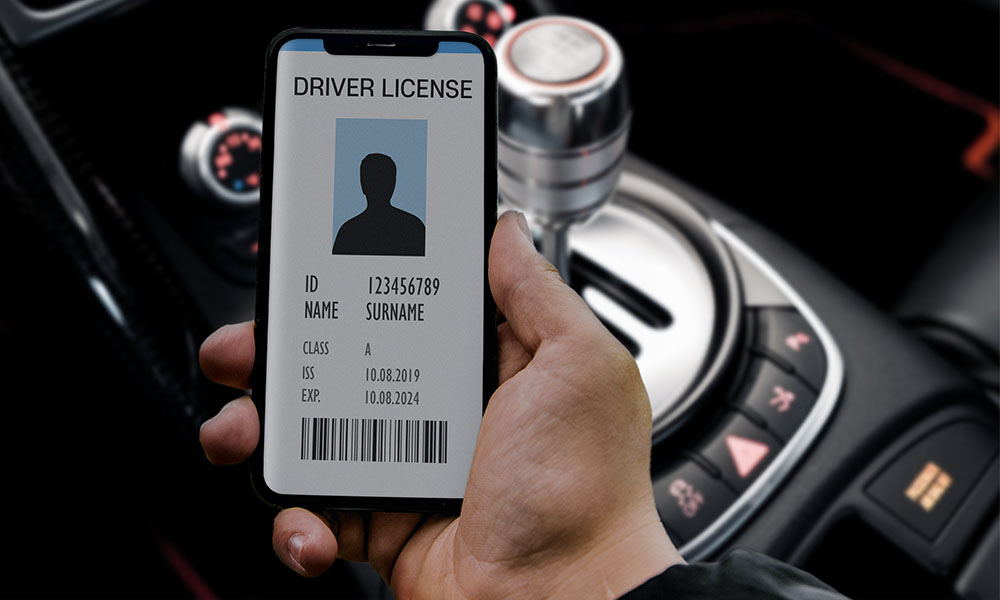Your Driver’s License Could Be the Next Thing in Your Apple Wallet
 Credit: KaimDH / Shutterstock
Credit: KaimDH / Shutterstock
Toggle Dark Mode
While Apple’s new Car Key technology is getting a lot of attention right now, this may be just be another step in the plan to turn your iPhone into a true digital wallet, as a newly discovered series of patent applications suggests.
Although Apple’s Wallet app on your iPhone can already include store loyalty cards, credit and debit cards, and now even keys to your car, there’s one important category that’s still missing, and that’s actual digital ID cards such as drivers licenses and passports.
In other words, you can almost leave your physical wallet and even your keys at home when you go out, but not quite, since if you’re actually driving the one piece of the puzzle that’s still missing is a digital version of your driver’s license. In most jurisdictions, if you’re stopped by the police they’ll want to see the physical card in your possession, and usually levy a fine if you don’t have it with you.
Third-party developers have already been tackling this in some jurisdictions, with varying degrees of success. For example, earlier this year, the Canadian province of Ontario launched a new eID-Me app and service in partnership with Ottawa-based develop Bluink that provides a clever way of getting authenticated Canadian passports and drivers licenses securely stored on your iPhone, leveraging technologies such as the NFC chips found in passports and iOS location services to verify your home address.
Of course, the problem with these solutions is that they end up becoming fragmented, with different apps for different jurisdictions that all work in different ways. Understandably, Apple, being Apple, would like to find a way to make this easier for users.
‘Providing Verified Claims of User Identity’
A new slew of patent applications from Apple, all titled Providing Verified Claims of User Identity show how the iPhone maker is clearly trying to solve this problem with core iOS technologies, outlining how a user’s ID can be recorded, transmitted, and confirmed.
As noted by AppleInsider, the patent applications don’t use the word “iPhone” at all, but this isn’t all that surprising as most patent applications are written generically to ensure the widest possible coverage in the future. For example, if Apple described the iPhone by name, then it would have a weaker position in enforcing its patent against Android handset makers, since they could claim that it doesn’t encompass their technology.
The patents primarily refer to passports at this point, but it’s obvious the system could be used for many different pieces of identification that require a higher level of verification, both when adding them to your device and by the people and technologies that could be used to read them.
For example, Bluink’s eID-Me that’s being rolled out in Canada requires that users physically scan their passport using the NFC reader in the iPhone, plus use the iPhone camera to take a photograph of the passport and driver’s license, and take a selfie to perform facial recognition matching. Then, as an additional check, location services must be enabled and the initial registration must occur from the address that’s listed on the passport and driver’s license.
What This Means
The result of all of this is to provide a digital identity within the iPhone that serves as far more than just a visual snapshot of a piece of ID that can be shown for official purposes into a digital ID that can be used to access online services without having to struggle with more primitive verification methods such as phone calls and physically mailed activation codes.
However, once government agencies truly get on board with this technology — and that’s really the biggest hurdle right now to digitizing passports and drivers licenses into Apple Wallet — it ultimately stands to be much better than a physical identification card. For example, at a roadside stop, drivers could transmit their verified digital ID to a police officer without having to physically hand anything over at all, and the officer would have a greater assurance that they’re getting a valid ID provided to them.
After all, governments have been struggling for years to add security features to physical cards that help to prevent counterfeiting, but it’s still a cat-and-mouse game. On the other hand, Apple’s new patents show how it could do for passports and driver’s licenses what it’s already done for credit cards with Apple Pay — make them considerably more secure and virtually impossible to steal or forge.






